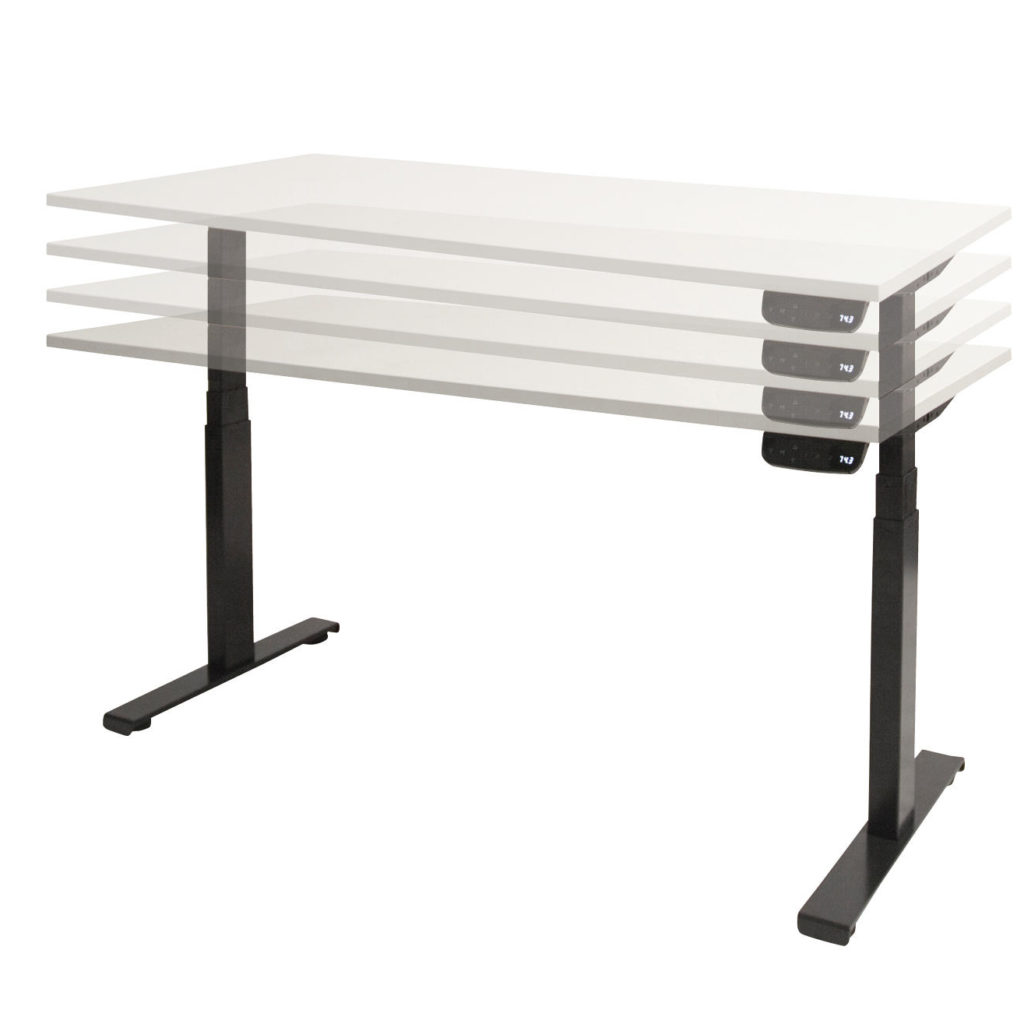In today's workplace culture, the popularity of sit/stand desks is growing rapidly, and rightly so. They allow employees to alternate between sitting and standing, reducing the disadvantages of sitting for long periods of time and promoting overall health and productivity. However, to truly reap the benefits of a sit/stand desk, it is crucial to understand and cultivate proper standing posture.
1. Distance to the Office:
The distance from the desk is vital when adopting a good standing posture. Stand an arm's length away from the desk to ensure you have easy access to your work surface without putting unnecessary strain on your arms and shoulders.
2. Posture of the Head and Neck:
Keep your head straight and your neck in a neutral position. Avoid sticking your head forward, which can cause strain on the neck muscles. Your eyes should be at the same level as the center of your computer screen.
3. Shoulders Relax:
Let your shoulders hang relaxed. Avoid pulling them up, which can lead to discomfort and tension in the neck and upper back. Shake out your shoulders regularly to reduce tension.
4. Elbows at a 90 Degree Angle:
Bend your elbows at approximately a 90 degree angle. This allows your arms to rest relaxed on the desk, preventing excessive tension.
5. Wrist and Hand Position:
Keep your wrists straight and in line with your forearms. Avoid extreme bending of the wrists as this can lead to problems such as carpal tunnel syndrome. Place the keyboard at elbow height.
6. Stable Base:
Stand with your feet shoulder-width apart. This creates a stable base and prevents fatigue. Distribute your weight evenly over both legs.
7. Alternation between standing and sitting working:
The key to a healthy working attitude is variety. Change between sitting and standing regularly to keep muscles active and reduce pressure on your joints.
8. Comfortable Shoes:
Wear comfortable shoes that provide good support. This keeps your body in a more natural position, which is important for good standing posture.
9. Use an Anti-Fatigue Mat:
If you stand for long periods of time, consider using an anti-fatigue mat. This helps reduce pressure on your feet, legs and lower back.
10. Listen to your Body:
Perhaps the most important aspect is to always listen to your body. If you feel discomfort, make adjustments. Change your position, do stretches and take regular breaks.
Adopting a correct standing posture behind a sit/stand desk is not an exact science, but rather an art that requires attention and dedication. Experiment with different heights, positions and postures to discover what works best for you. A healthy standing posture not only contributes to physical well-being, but can also have a positive impact on your energy level and productivity during the working day. Take the time to adjust your workplace and invest in a healthy working position that promotes both comfort and performance.




